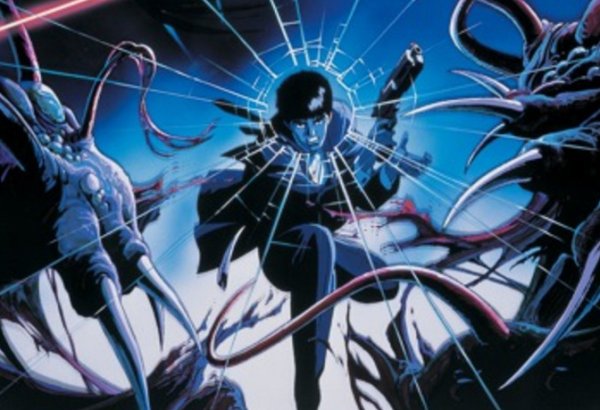 Engaging, exciting shoujo fantasy
Engaging, exciting shoujo fantasy
Creative Staff
Story/Art: Mizuho Kusanagi
Translation/Adaptation: JN Productions/Ysabet Reinhardt MacFarlane
What They Say
While on the run, Yona and Hak head to Hak’s hometown, where she attempts to heal her broken heart. However, she can’t rest there for long once she discovers that Su-won may soon become king! What will Yona choose to do in the wake of this news?
Content: (please note that content portions of a review may contain spoilers):
Hak flees with Yona to his home of Fuuga, the land of the Wind Tribe, to escape Su-won’s reach. However, no sooner have they caught their breath than they discover that the Fire Tribe has cut off the Wind Tribe’s water supply. This is because Mun-deok, elder chief of Hak’s people, has deduced the nature of Su-won’s plot and refuses to acknowledge the young man’s succession. For the first time in her life, Yona witnesses the suffering of other people unconnected to her. Both Yona and Hak independently make up their minds to leave Fuuga in order to avoid a full scale war between tribes. Mun-deok advises them to seek counsel from one of the priests wandering the wastes, but while exploring the uninhabited area, they are confronted by The Fire Tribe.
In Yona’s second volume, we find out that King Il’s murder was not just a singularly motivated act of vengeance. There were political machinations behind the scenes that played their part in bringing about the coup; four of the tribes were unhappy under the previous king’s weak leadership and want Kohka restored to its former glory. We also get a glimpse into the inner life of Su-won and see that he has complicated, sometimes contrary feelings about his revenge and his kingship. He genuinely cares about Hak, Yona and Mun-deok and feels guilt for killing the king in front of Yona. With Il’s death, Su-won realizes that his closest, most dear relationships also died. At the same time, he shares the feelings of most tribe leaders about the state of Kohka. He chooses to stuff down his regrets for the sake of building a strong nation, and this decision is punctuated by a defiant coronation speech.
In contrast to the upheaval and political strife at Hiryuu Palace, stands the quiet, secluded Fuuga. Here, we get to meet the rest of Hak’s friends and family, including his sickly younger brother, Tae-yeon. Firsthand observation of Hak’s bonds with these folks adds some warmth to his character, but nothing that plays out is all that surprising: he’s a great old brother, a hit with the ladies (though not receptive to their advances) and someone that all the tribe has faith in and feels proud of. This is all less interesting than Yona’s experience in Fuuga, though.
On paper, it’s fairly predictable that Yona would “come around” after watching the Wind Tribe bear its suffering with dignity. However, Kusanagi’s execution of the princess’s emotional growth is quite beautiful. Yona begins to realize what sort of unjustified pain people endure in the world, and then it dawns on her that the Wind Tribe is bearing this for her sake. She starts to understand how much Hak is personally sacrificing–and has sacrificed–for her sake. To see these ideas wash over her followed by a feeling of being helpless to change any of it is very poignant. But, Yona fights this feeling of helplessness. In the final chapters of this volume, we see Yona metamorphose from lifeless doll to a young woman with agency. First, she convinces Hak to set out from Fuuga with her when he was dead set on leaving her behind to lead a quiet, protected life. Second, she directly confronts the Fire Tribe during Hak’s battle with them.
This encounter with the Fire Tribe contains this volume’s most overtly symbolic moment. Yona has revealed herself to Kang Tae-jun and confronted him with a burning conviction no one has seen from her before. He grabs the princess by the hair to prevent her from assisting Hak, and she takes his own sword and frees herself by cutting through her own tresses. Metaphorically, she is shedding her old way of life and gaining freedom (and Hak) by making the decision to sever herself from its grip. Her long, beautiful hair is a symbol of her royalty and privledge, but Yona is on the path to becoming something else than simply a princess.
In Summary
The second volume of Yona continues all the things that made the first one great. It’s character-focused, emotionally intelligent eastern fantasy with some political intrigue thrown in for good measure. The story hasn’t lost any momentum, though there were a couple of spots I was expecting it to, and Kusanagi isn’t taking shortcuts with the character development. If you were into the previous volume, approach prepares for more of that same goodness.
Content Grade: B+
Art Grade: A
Packaging Grade: A-
Text/Translation Grade: A
Age Rating: Teen
Released By: Viz Media
Release Date: October 4, 2016
MSRP: $9.99



